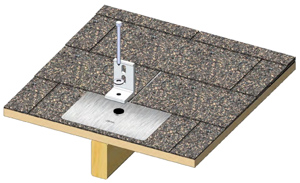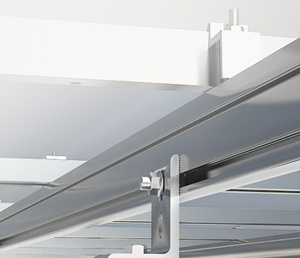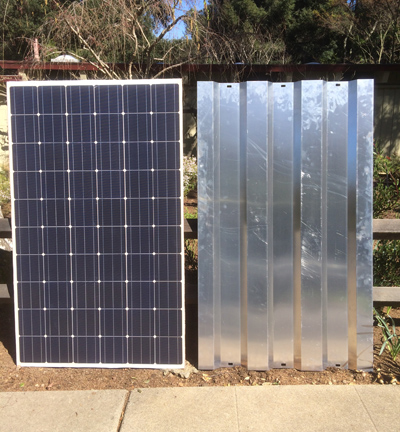Reducing Costs of Residential Solar PV: Through module & hardware innovations
 With a 41% increase in the number of residential solar power installations, 2013 was a record-breaking year for the United States solar industry. So far, 2014 is on track to be another stellar year for growth, with a continued focus on cost reductions. Solar module prices have come down dramatically over the past few years, but it’s unlikely significant additional price drops can persist for much longer in this area. Therefore, emphasis is slowly shifting in savings from modules to balance-of-system (BoS) and power electronics.
With a 41% increase in the number of residential solar power installations, 2013 was a record-breaking year for the United States solar industry. So far, 2014 is on track to be another stellar year for growth, with a continued focus on cost reductions. Solar module prices have come down dramatically over the past few years, but it’s unlikely significant additional price drops can persist for much longer in this area. Therefore, emphasis is slowly shifting in savings from modules to balance-of-system (BoS) and power electronics.
A good example of technology adoption in the BoS area is microinverters, which were introduced in 2012 to create AC output at the module level. Although microinverters are not any lower in cost compared to a junction box/series inverter approach, the introduction of AC modules have lowered on-roof installation times by 30%*. Installing microinverters on solar modules at factory labor rates provides a cost savings that has reduced installers’ operating expenses and, ultimately, the system price for homeowners. In just a couple of years, AC modules have become commonplace in the residential market.
Design options
 Currently, residential solar racking hardware consists of field-assembled parts, which are attached to a roof. They are often tricky and time-consuming to install due to their complexity. Compatible with many different types of solar modules, most racking hardware isn’t module-type or manufacturer specific. More often than not, hardware is manufactured and supplied by companies that don’t actually produce the solar modules. This separation of module and racking leads to a large number of possible part combinations on the roof.
Currently, residential solar racking hardware consists of field-assembled parts, which are attached to a roof. They are often tricky and time-consuming to install due to their complexity. Compatible with many different types of solar modules, most racking hardware isn’t module-type or manufacturer specific. More often than not, hardware is manufactured and supplied by companies that don’t actually produce the solar modules. This separation of module and racking leads to a large number of possible part combinations on the roof.
Hardware variability, combined with installer workmanship, can directly impact the quality of a solar project. It also exposes homeowners to a wide range of potential outcomes—from a quality, cost, appearance, and performance perspective.
To make life easier for solar system owners, several companies are working to lower BoS costs and simplify racking designs and installation efficiencies. For instance, cost-competitive, roof-mounting brackets are one option now available to installers that can accommodate different types of rail supports for solar modules (see Image 1). Support rails with built-in wire clips are another example of a simplified BoS design, which lowers the cost of hardware and installation by five to ten percent (see Image 2).
Cuttings costs
In early 2013, the US national average installed system price for residential PV systems was $4.93/Watt. Installation prices can vary due to labor rates, project timelines, and installer-specific issues. In 2012, for example, the average installed cost for a system in Texas was $3.90/Watt; whereas, in California it was $5.70/Watt. Current cost of installation in the mid-Atlantic region is reported to be between $3/Watt and $4/Watt.
The US Department of Energy (DOE) SunShot program has a 2020 target installed system cost of $1.50/Watt for solar PV residential systems (see Table 1). Module pricing has dropped from $3.50/Watt in 2008, to approximately $0.70/Watt today.
|
Cost Element |
Cost per Watt |
|
Module |
$0.54 |
|
Power electronics |
$0.12 |
|
BoS hardware |
$0.19 |
|
BoS Non-hardware |
$0.65 |
|
TOTAL: |
$1.50 |
Table 1. DOE SunShot 2020 Goals: For residential system costs
The total BoS-related cost (excluding power electronics) in the DOE 2020 scenario is $0.84/Watt, a 76% reduction from the 2010 BoS costs of $3.50/Watt. The 2012 BoS costs in US residential PV, however, was reported as $3.82/Watt—indicating that very little, if any, progress has been made on reducing balance-of-system costs over the last several years. It’s estimated that about ~$1.00/Watt of the overall residential solar systems is attributed to the installation labor and non-power electronics hardware.
Integrating innovation
 An inventive, new way to reduce BoS costs is by factory integrating the mounting support structure and module. Today’s module racking and mounting hardware contribute approximately $0.44/Watt to the cost of a US residential solar installation. A module-integrated mounting approach is expected to save 50% or more, eliminating a minimum of $0.22/Watt from the cost of mounting hardware.
An inventive, new way to reduce BoS costs is by factory integrating the mounting support structure and module. Today’s module racking and mounting hardware contribute approximately $0.44/Watt to the cost of a US residential solar installation. A module-integrated mounting approach is expected to save 50% or more, eliminating a minimum of $0.22/Watt from the cost of mounting hardware.
The integration of the module with the mounting support structure will increase the weight, however, so a lightweight module is required. Figures 3 shows a module that uses a composite substrate to support monocrystalline silicon (c-Si) cells. Herein, composite replaces the glass, aluminum frame and the backsheet of a traditional PV module. This helps decrease the total weight by over 60%. An adjacent metal support structure allows for module cooling, and an efficient transfer of wind and snow loads from the module to the roof. The combined weight of this 60-cell module and support structure is 27 pounds—providing a 35% weight reduction from a traditional glass solar module.
Additionally, when factoring in the labor costs for a residential PV system, which are in the range of $0.51 to $0.55/Watt (depending on system size, roof complexity, hardware design, and skill level of the installation crew), an integrated-module structure is projected to reduce installation costs by about $0.35/Watt to $0.40/Watt.
By considering a new structure, the combined savings from hardware and labor for an integrated system could be as high as $0.60/Watt, helping to bring the total installed system costs that much closer to the 2020 DOE SunShot goals.
* Article references available upon request.
Tom Hood is the founder and CEO of Giga Solar FPC, Inc., and Sicco W.T. Westra is the Chief Business Development officer.
Giga Solar FPC, Inc.
www.gigasolarpv.com
Author: Tom Hood & Sicco W.T. Westra
Volume: July/August 2014











.png?r=6665)
